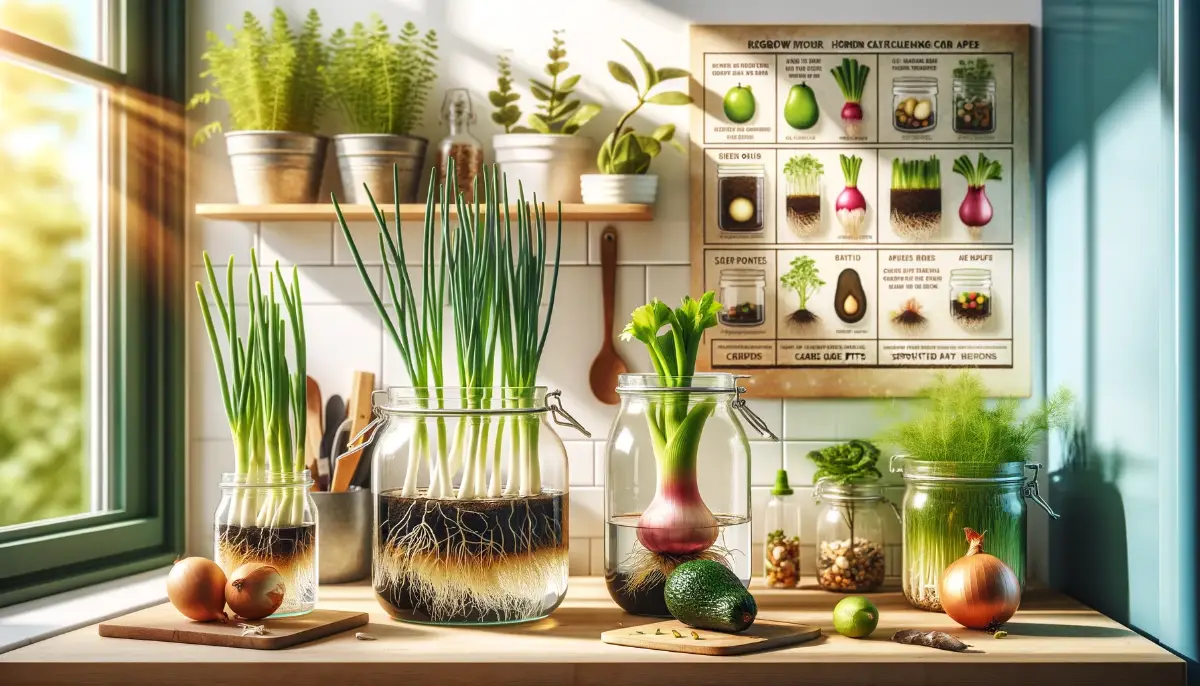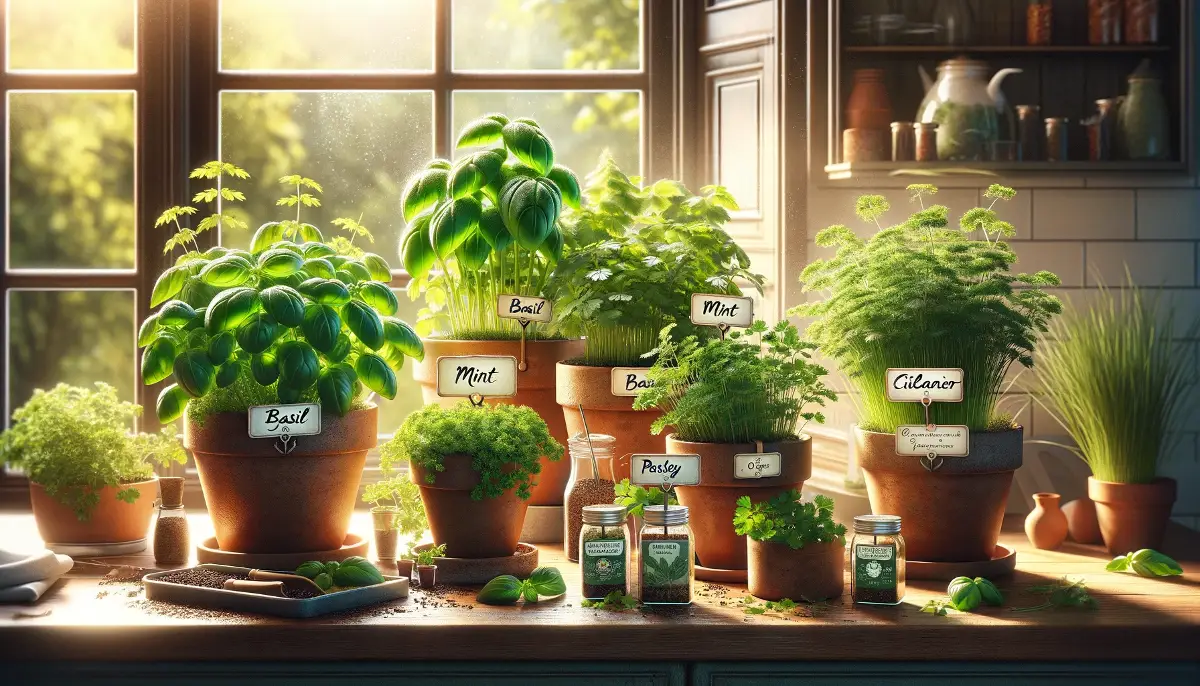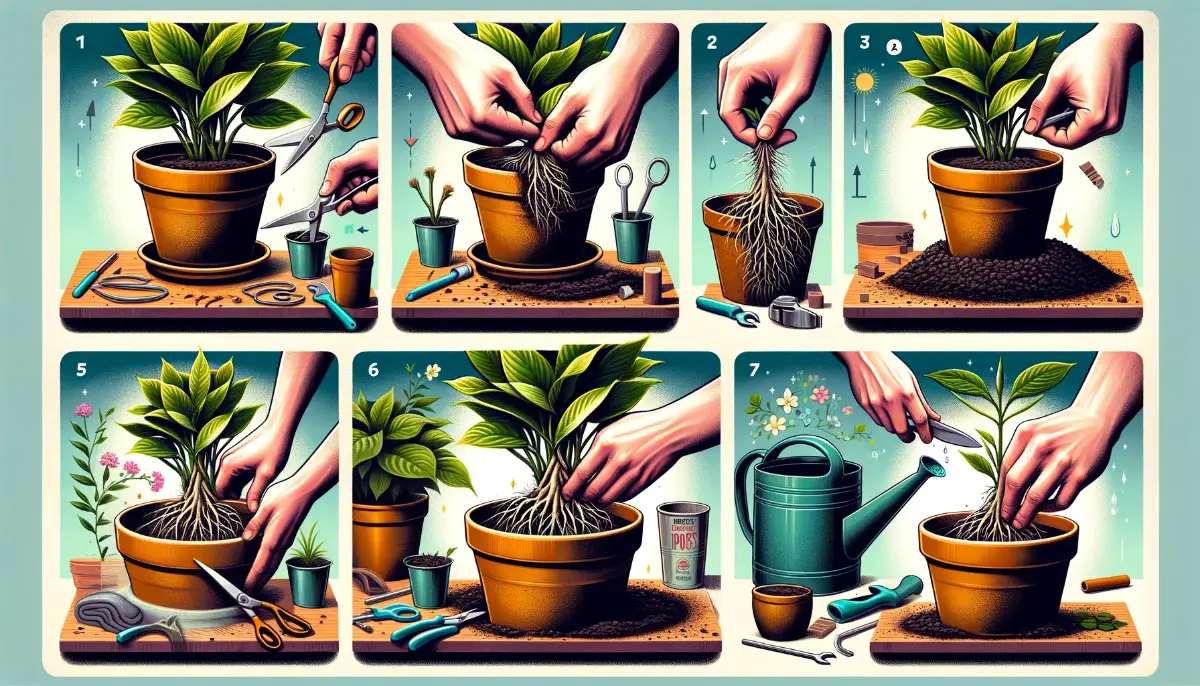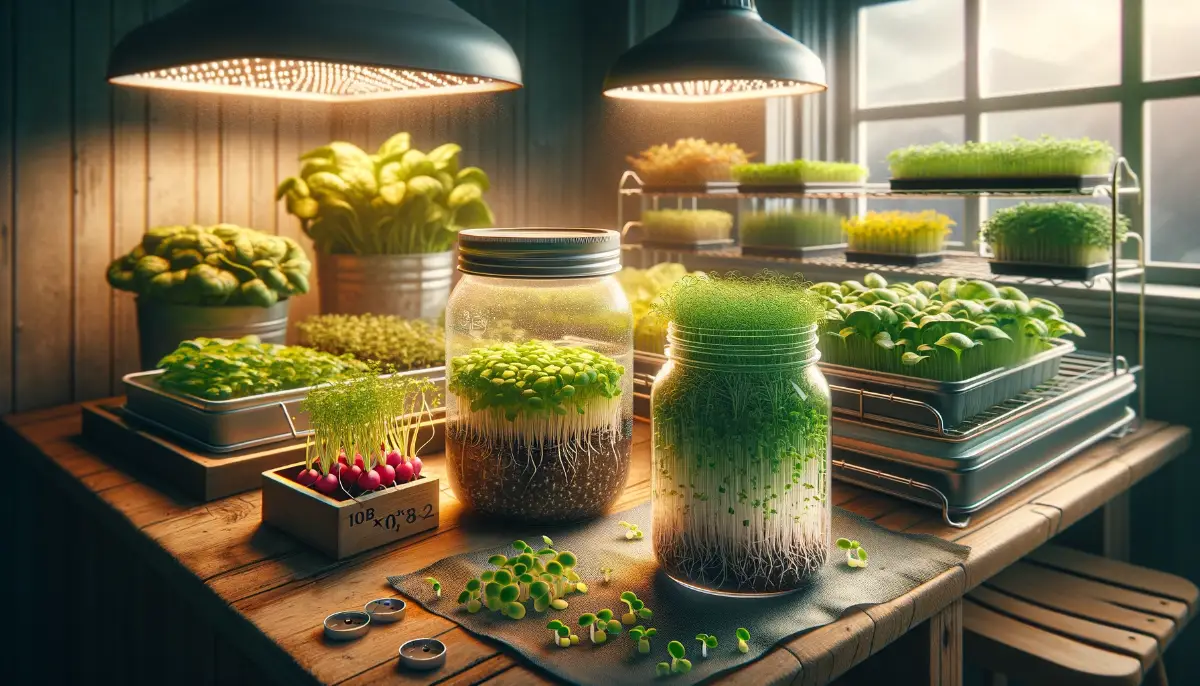Regrowing scraps and grocery store produce offers an eco-friendly, cost-effective way to enjoy fresh vegetables, fruits, and herbs.
Regrowing produce from scraps and grocery store purchases offers an enriching way to understand the cycle of plant growth while also contributing to a more sustainable lifestyle.
By using parts of vegetables, fruits, and herbs that are typically discarded, anyone can embark on a gardening journey that benefits the environment, saves money, and provides the satisfaction of cultivating food at home.
Why Regrow Produce?
The initiative to regrow produce from scraps is driven by multiple compelling reasons:
- Sustainability: It reduces waste by giving a second life to what would usually be thrown away.
- Cost-Effectiveness: Save money on groceries by regenerating produce from existing purchases.
- Educational Value: It’s a hands-on way to learn more about plant biology and the growing process.
- Health and Wellness: Freshly regrown produce can contribute to a healthier diet, and the act of gardening itself is a therapeutic activity that can reduce stress.
The Basics of Regrowing Plants
Regrowing produce involves certain fundamentals that ensure the success of your gardening efforts:
- Know the Plant Part: Identify which part of the plant can regrow. For example, the root end of green onions or the crown of a pineapple.
- Provide the Right Conditions: Most regrown plants need ample sunlight, water, and proper soil or water medium to thrive.
- Set Realistic Expectations: Not all plants regrow entirely; some might only offer partial growth or foliage rather than fruiting bodies. It’s also crucial to understand that hybrids may not grow true to their parent plants.
Getting Started with Regrowing Produce
Here’s how you can embark on your regrowing journey with some common kitchen scraps:
- Preparation: For most vegetables and herbs, start by saving the root end, stem, or seeds. Ensure these parts are clean and free from rot.
- Rooting in Water: Many plants, like green onions and celery, can begin regrowing roots in just water. Place the saved part in a container with water, ensuring it isn’t fully submerged. Change the water regularly to prevent mold and rot.
- Transplanting: Once roots have developed, transplant the plant into soil for further growth. Some plants can continue to live in water, but soil provides nutrients for more substantial development.
- Care and Maintenance: Provide your regrown plants with sufficient sunlight, water, and care. Indoor plants can benefit from a sunny windowsill or artificial grow lights if natural light is insufficient
Vegetables and Fruits You Can Regrow
Stems to Regrow in Water
Certain vegetables can begin their regrowth journey in nothing but water, making it an easy and accessible method for beginners. Here’s what you can start with:
Bok Choy: Place the root end in water; new growth will sprout from the center.
Celery: Cut the base and place it in a shallow bowl of water to watch new leaves emerge.
Green Onions: The white roots can regrow green shoots multiple times if kept in water.
Root Vegetables to Regrow for Leafy Tops
While the root part of these vegetables may not regrow, you can harvest fresh leaves from their tops:
Carrots: Placing the top in water can sprout green shoots, which are edible and can garnish salads.
Beets: Similar to carrots, the tops can regrow leafy greens suitable for cooking.
Tuberous Roots & Stems to Regrow Entire Plant
Tuberous roots and certain stems can regenerate the entire plant under the right conditions:
Potatoes: Eyes (buds) on the surface can sprout into new plants. Cut the potato into chunks ensuring each has one or two eyes. Dry them before planting in soil.
Sweet Potatoes: Known for their attractive vines, you can sprout slips (shoots) in water, each of which can become a new plant.
Rhizomes
These are specialized stems growing underground, capable of producing new growth:
Ginger: Plant a piece of ginger rhizome in potting soil with the buds facing up. Keep it in indirect light, and moist soil, and watch for new shoots.
Turmeric: Similar to ginger, turmeric can be regrown by planting a piece of the rhizome with buds in moist, well-drained soil.
Bulbs, Stems, and Modified Stems
Some plants grow from bulbs or modified stems and can be regrown for their leafy parts:
Garlic: A single clove can regenerate into a new bulb. Plant it in potting soil with the pointed end up.
Onions: The bottom end of an onion can be planted in soil or water to regrow. Ensure it has roots and a bit of the base attached.
Seeds
Some fruits and vegetables can be regrown from their seeds, although this process may be longer and requires more care:
Avocado: While technically a fruit, an avocado pit can be suspended over water to sprout before planting.
Tomatoes: Seeds from a ripe tomato can be dried and planted in soil to grow new tomato plants.
Herbs to Grow from Stem Cuttings
Many herbs can be propagated from just a small cutting, making it an easy way to expand your herb garden:
Basil: Place stem cuttings in water until roots develop, then plant in soil.
Mint: Similar to basil, mint stems will root in water and can then be transplanted to soil.
How to Regrow Specific Produce
Pineapple
To regrow a pineapple, remove the top by twisting it off to preserve the parts needed for regrowth. Peel back the leaves at the base, trim just the tip of the base, and remove any excess fruit. Suspend the pineapple top over a glass of water using toothpicks to allow the base to submerge slightly. Keep it in a sunny area, change the water regularly, and wait for roots to form before planting.
Potatoes
For potatoes, use pieces that have sprouted eyes. Cut the potato into chunks, ensuring each has at least one eye. Let them dry for a few days, then plant them in soil about one foot apart and eight inches deep. After a few months, you’ll have new potatoes ready for harvest.
Lettuce, Bok Choy, and Leafy Greens
Regrow lettuce, bok choy, and other leafy greens by retaining the rooting section and placing it in water. Wait for a second flush of leaves to grow. This method also works for regrowing from individual leaves. Place the leaves in a bowl with a little water, keep them in a sunny spot, and mist with water every few days. New roots and leaves will form, ready for transplanting into the soil.
Herbs (Basil, Mint, Cilantro)
A wide range of herbs can be regrown from stem cuttings. Place a stem about 4 inches long in a glass of water, ensuring the leaves do not submerge. Once roots grow, transplant the cuttings into pots or directly into your garden.
Ginger
To regrow ginger, soak a piece of the root overnight, then plant it in a pot filled with moist soil, positioning the buds upward. Keep the pot in a spot without direct sunlight and maintain moist soil. New shoots should emerge within a few weeks, with the plant ready for harvest in about a year.
Sweet Potatoes
Sweet potatoes can be sprouted in water using the toothpick method to suspend a cut sweet potato in a jar. Once it begins rooting and sprouting, each “eye” can grow a new slip. These slips, once rooted, can be planted in soil to grow new sweet potato plants.
Each of these methods leverages the natural regenerative capabilities of plants, turning kitchen scraps into thriving new plants. This not only reduces waste but also provides the joy of growing your own food from what would otherwise be thrown away.
Practical Tips for Success
To ensure the success of regrowing produce from scraps, follow these practical tips compiled from various sources. These tips will help you create optimal conditions for your regrown plants, encouraging healthy growth and maximizing your chances of success.
1. Provide the Right Growing Conditions
Sunlight: Most plants need ample sunlight to grow. Find a sunny windowsill or consider using a full-spectrum fluorescent light fixture for indoor gardens.
Water: Regular watering is crucial, but the amount varies by plant. Some plants prefer moist soil, while others require well-draining soil to prevent root rot. For plants regrown in water, change the water every few days to keep it fresh and prevent mold.
2. Choose the Right Container
Size and Material: Make sure the container is large enough to accommodate the root system of your plant. Containers with drainage holes are best to prevent excess water from sitting at the bottom and causing rot.
Repurposing Containers: You can repurpose many household items as planters, just ensure they are clean and have adequate drainage.
3. Soil Quality
Potting Mix: Use a high-quality potting mix that suits the specific needs of the plant you are regrowing. Some plants may require more nutrient-rich soil than others.
Fertilization: Consider adding organic fertilizer to provide additional nutrients, especially for plants that will live and produce for several months.
4. Patience is Key
Growth Time: Understand that some plants take longer to regrow than others. For example, a pineapple can take up to two years to bear fruit, while green onions may regrow in just a week.
5. Monitor for Pests and Diseases
Regular Checks: Keep an eye out for signs of pests and diseases. Early detection is crucial for effective treatment and to prevent spread to other plants.
Natural Remedies: Use natural remedies and pest control methods when possible, to keep your indoor garden organic and healthy.
6. Harvesting Your Regrown Produce
When to Harvest: Learn the signs of when your produce is ready to harvest. For leafy greens, this may be when they reach a certain size. For root vegetables, it might be a certain number of months after planting.
Continuous Harvest: Some plants, like lettuce and basil, can be harvested continuously by picking the outer leaves and allowing the center leaves to continue growing.
7. Enjoy the Process
Gardening, even on a small scale, is a rewarding activity that can bring joy and relaxation. Enjoy watching your plants grow and thrive from what would have otherwise been wasted.
By following these practical tips, you can successfully regrow a variety of fruits, vegetables, and herbs from kitchen scraps. This not only contributes to a sustainable lifestyle but also offers the satisfaction of growing your own food at home.
FAQs for Regrowing Plants at Home
Can all fruits and vegetables be regrown at home?
No, not all fruits and vegetables can be regrown at home. Some, like leafy greens and root vegetables, are more suitable for regrowing from scraps, while others may not regrow at all or require more specialized conditions.
What do I need to start regrowing vegetables and fruits from scraps?
To start, you’ll need the scraps (like the bottom of a celery stalk or a potato eye), a container or pot, fresh water, potting soil (for later stages), and a sunny spot or grow light.
How long does it take to regrow vegetables from scraps?
The time varies significantly depending on the type of vegetable or fruit. Some, like green onions, can start showing growth in as little as a week, while others, such as avocados, can take several years to bear fruit.
Do I need a garden to regrow fruits and vegetables?
No, many fruits and vegetables can be regrown indoors on a windowsill or under grow lights, making it a viable option for those without outdoor garden space.
Can I regrow fruits and vegetables in water indefinitely?
Some plants, like herbs and lettuce, can live in water for a long time, but most will do better and produce more if transferred to soil after they’ve developed roots.
What’s the best way to ensure my regrown plants get enough light?
A sunny windowsill is ideal for most regrown plants. If natural light is insufficient, full-spectrum grow lights can provide the necessary light levels for healthy growth.
How often should I change the water for plants regrown in water?
It’s best to change the water every few days to keep it fresh and prevent the growth of bacteria and fungi, which can harm the plant.
When should I transplant my regrown plants from water to soil?
Once the roots are a few inches long or the plant starts to outgrow its container, it’s time to transplant it into potting soil to allow for further growth.
Can regrown vegetables and fruits produce seeds that I can plant?
Yes, many regrown plants can eventually produce seeds, but it may take longer than plants grown from purchased seeds, and some may not be true to the parent plant if they’re hybrids.
How do I prevent pests and diseases in my regrown plants?
Keep your plants healthy with proper light, water, and air circulation. Inspect regularly for signs of pests or disease, and use natural remedies, like neem oil, to address any issues early on.










